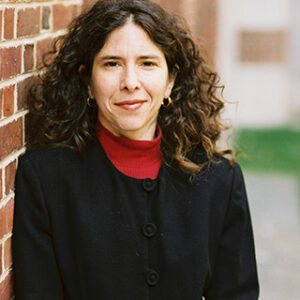
God-naming
Jan 8, 2016 By Reuven Greenvald | Commentary | Va'era
“And God spoke to Moshe, and [God] said to him: I am YHVH. I appeared to Avraham, to Yitzhak, and to Ya’akov as El Shaddai, but by my name YHVH I was not known to them” (Exodus 6:2–3).
When God shifts from using the ancient El Shaddai (usually translated as “God Almighty”) to YHVH, meaning, “I will be what I will be,” the divine-human relationship becomes more intimate.

Biblical Waterboarding
May 29, 2015 By Raysh Weiss | Commentary | Naso
A representation of the sotah (suspected adulteress) ritual from this week’s parashah (Num. 5:11–31).
Read More
A Little Black Mark
May 15, 2015 By Rachel Bovitz | Commentary | Behar | Behukkotai
In his autobiography, Benjamin Franklin describes a personal practice that involved daily focus on 13 moral virtues. Franklin’s memoir, translated into several languages in the late 18th century, became widely influential, reaching even Eastern Europe, where Rabbi Menahem Mendel Lefin of Satanov wrote Heshbon Hanefesh, published in 1808. Rabbi Lefin included justice and most of the other virtues in Franklin’s list when he created his 13 primary middot (moral virtues) to be focused upon in mussar practice (the Jewish approach to cultivating these virtues). Rabbi Lefin’s definition of tzedek (justice) paraphrases a classic Talmudic teaching attributed to Hillel: “What is hateful to you, do not do to your neighbor.”
Read More
Bodies and Their Critics
May 8, 2015 By JTS Alumni | Commentary | Emor
By Yonah Kirschner (DS ’15)
Cassey Ho, a fitness blogger, recently posted a video she created in response to the many body-shaming comments she was receiving from critics online. The video went viral. It first shows Cassey, clearly athletic and healthy, walk over to a mirror, smiling happily. But as the video progresses, a barrage of unpleasant social media comments appear. Cassey’s hand then becomes an image-editing tool, and we watch as Cassey, now humiliated, sadly scrapes away parts of her body. The dejection communicated by the music and her facial expressions makes it a powerful experience for the viewer, difficult to watch as she mutilates her body into a caricature of the “perfect” body.
Read More
The Saint and the Zohar
May 1, 2015 By Vivian B. Mann <em>z”l</em> | Commentary | Aharei Mot | Kedoshim
We often think of Jewish life in Spain in terms of the massacres of 1391 and the Spanish Expulsion in 1492. But the art made for the Church between those two dates presents a more nuanced view of Christian–Jewish relations.
Read More
Deeper Than the Skin
Apr 24, 2015 By Yitzhak Lewis | Commentary | Metzora | Tazria
Your body is a map of roads
To be taken,
And not taken
Alone.
Your skin enfolds what
Your eyes shut behind them,
All your past is bored into it
Every day with the awl of time.

An Offering of Love
Apr 15, 2015 By Alisa Braun | Commentary | Shemini
What does a feminist reworking of Leviticus 10 sound like? The Indigo Girls song “Strange Fire” (1987) beautifully illustrates how biblical images and stories weave their way into our lives and the art we create. The song exemplifies their signature style: a second-wave feminist message wrapped in a spare acoustic sound, strong rhythms, and soft harmonies. The lyrics allude to the actions of Aaron’s sons as a way of critiquing those within organized religion who wield power and seek to silence voices of personal spiritual expression.
Read More
“I Will Go to the Mountain of Myrrh”
Apr 10, 2015 By Barbara Mann | Commentary | Pesah
The Song of Songs is an essential text for modern Hebrew culture, and was perhaps the most beloved biblical book of modernist authors such as S. Y. Agnon and artists such as Ze’ev Raban (1890–1970). Hebrew fiction writers and poets in Palestine in the interwar period plumbed the Song for its extensive lexicon describing the body and the landscape, and its sensitive depiction of psychological and sexual drama. Their modern descriptions of the land before them were often rendered in terms that recalled the erotic interiors and pastoral domain of the Song. Raban taught at the Bezalel Academy of Arts and Design in Jerusalem, and his Jugendstil (German Art Nouveau) illustrations of the Song of Songs (1923) are an exemplary cultural product of their time.
Read More


